-
 Bitcoin
Bitcoin $87,496.1345
2.83% -
 Ethereum
Ethereum $1,649.4006
2.40% -
 Tether USDt
Tether USDt $0.9999
0.01% -
 XRP
XRP $2.1353
2.56% -
 BNB
BNB $607.2800
2.10% -
 Solana
Solana $141.0218
0.03% -
 USDC
USDC $1.0000
0.03% -
 Dogecoin
Dogecoin $0.1619
1.70% -
 TRON
TRON $0.2443
0.54% -
 Cardano
Cardano $0.6452
2.26% -
 Chainlink
Chainlink $13.5841
4.04% -
 UNUS SED LEO
UNUS SED LEO $9.4089
0.67% -
 Avalanche
Avalanche $20.3134
2.09% -
 Stellar
Stellar $0.2551
3.56% -
 Toncoin
Toncoin $3.0369
1.01% -
 Shiba Inu
Shiba Inu $0.0...01275
2.97% -
 Sui
Sui $2.2408
3.95% -
 Hedera
Hedera $0.1723
3.90% -
 Bitcoin Cash
Bitcoin Cash $338.9415
0.21% -
 Polkadot
Polkadot $3.9455
0.38% -
 Hyperliquid
Hyperliquid $18.2240
0.51% -
 Litecoin
Litecoin $79.2370
3.24% -
 Bitget Token
Bitget Token $4.5277
-1.31% -
 Dai
Dai $0.9999
0.00% -
 Ethena USDe
Ethena USDe $0.9993
0.02% -
 Pi
Pi $0.6340
-1.23% -
 Monero
Monero $216.2114
-0.14% -
 Uniswap
Uniswap $5.4798
2.97% -
 Pepe
Pepe $0.0...07904
5.68% -
 Aptos
Aptos $5.1618
5.56%
how bitcoin farming works
Bitcoin farming involves verifying transactions and adding them to the blockchain ledger with specialized hardware and software, receiving bitcoins as a reward for successful efforts.
Oct 02, 2024 at 03:00 am
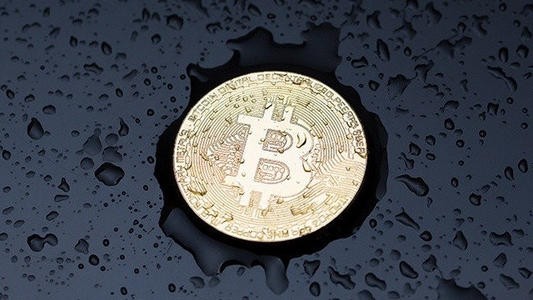
How Bitcoin Farming Works
Overview:
For those unfamiliar, Bitcoin farming, also known as cryptocurrency mining, is the process of verifying and adding transaction records to a public ledger - known as the blockchain - that stores details of every cryptocurrency transaction. As a reward for their work, farmers receive a fixed number of bitcoins, the native cryptocurrency of the network.
Step 1: Obtain the necessary hardware and software
To begin Bitcoin farming, you will require specialized mining equipment, such as an ASIC miner. ASIC miners are dedicated computers specifically designed for cryptocurrency mining and perform hashing algorithms much faster than traditional CPU or GPU setups. You will also need a mining software, such as CGMiner or BFGMiner, which enables your hardware to interact with the cryptocurrency network.
Step 2: Join a mining pool
As the difficulty of mining bitcoins increases over time, joining a mining pool is recommended. Mining pools combine the computational power of multiple miners, making it more likely to solve the complex mathematical equations required to find a new block and earn rewards. When a block is found by the pool, the reward is shared among the participants based on their contribution.
Step 3: Configure your mining hardware
Before commencing mining, you need to configure your ASIC miner to connect to your chosen mining pool. This involves specifying the pool's server address, port number, and your worker ID. Ensure that your hardware is set up in a well-ventilated area with stable power supply to avoid overheating or potential damage.
Step 4: Start the mining process
Once the configuration is complete, initiate the mining process. Your ASIC miner will begin carrying out complex hashing algorithms, utilizing its computational power to solve blocks and add them to the blockchain. The time it takes to find a block depends on the miner's hashrate, pool size, and network difficulty.
Step 5: Manage and monitor your mining operation
To ensure optimal performance of your mining operation, it's crucial to monitor your rig's performance by regularly checking hash rates, temperatures, and fan speeds. Ensure regular maintenance of your hardware, such as cleaning out accumulated dust, to maintain stability. Additionally, the profitability of your mining operation should be taken into account, which is influenced by factors like energy costs, hardware efficiency, and current block reward value.
Step 6: Receive and manage your rewards
Upon successful mining of a block, the associated rewards will be deposited into your designated Bitcoin wallet. You can choose to hold these bitcoins or sell them on cryptocurrency exchanges to convert them into fiat currencies, such as US dollars or Euros. It's important to note that the mining rewards received may fluctuate based on several factors, including block difficulty and mining pool commissions.
Disclaimer:info@kdj.com
The information provided is not trading advice. kdj.com does not assume any responsibility for any investments made based on the information provided in this article. Cryptocurrencies are highly volatile and it is highly recommended that you invest with caution after thorough research!
If you believe that the content used on this website infringes your copyright, please contact us immediately (info@kdj.com) and we will delete it promptly.
- An Aptos community member submitted a proposal to slash staking rewards for the network's native token
- 2025-04-21 13:50:14
- The Ultimate Guide to BTFD Coin (BTFD): ROI Potential, Presale Stages, and More
- 2025-04-21 13:50:14
- TRON (TRX) Price Broke Above Descending Trendline Resistance Targeting $0.2800
- 2025-04-21 13:45:14
- VOXEL token price skyrockets by more than 50% after a BitGet malfunction causes the VOXE/USDT perpetual contract to surpass that of Bitcoin
- 2025-04-21 13:45:14
- Why Is Least Privilege Fundamental to Creating Safe Environments?
- 2025-04-21 13:40:14
- Top Crypto Gainers Today - JUP, WAVES, FXS, and DOT Are Outperforming the Market
- 2025-04-21 13:40:14
Related knowledge

How to buy and sell Bitcoin using a P2P platform?
Apr 18,2025 at 05:57pm
Buying and selling Bitcoin using a P2P (peer-to-peer) platform can be an efficient way to trade cryptocurrencies directly with other individuals. This method offers flexibility, often lower fees, and the ability to use various payment methods. In this article, we will walk through the process of buying and selling Bitcoin on a P2P platform, ensuring you...
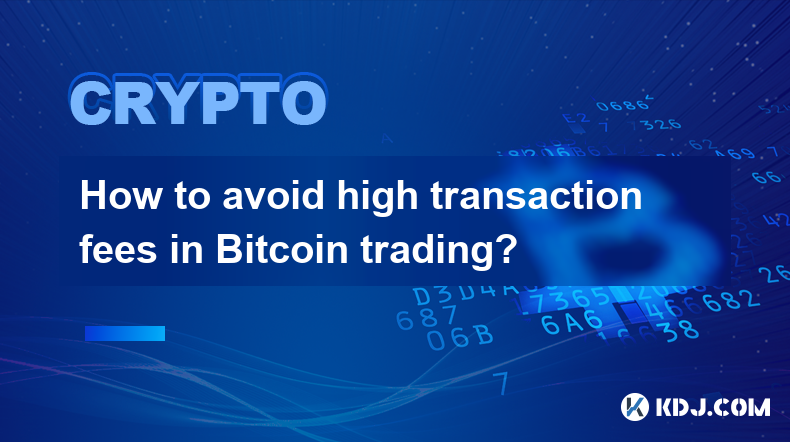
How to avoid high transaction fees in Bitcoin trading?
Apr 18,2025 at 12:14am
How to Avoid High Transaction Fees in Bitcoin Trading? Bitcoin trading can be exciting, but high transaction fees can quickly erode your profits. Understanding how to minimize these fees is crucial for any trader looking to maximize their returns. In this article, we will explore various strategies and techniques to help you avoid high transaction fees ...
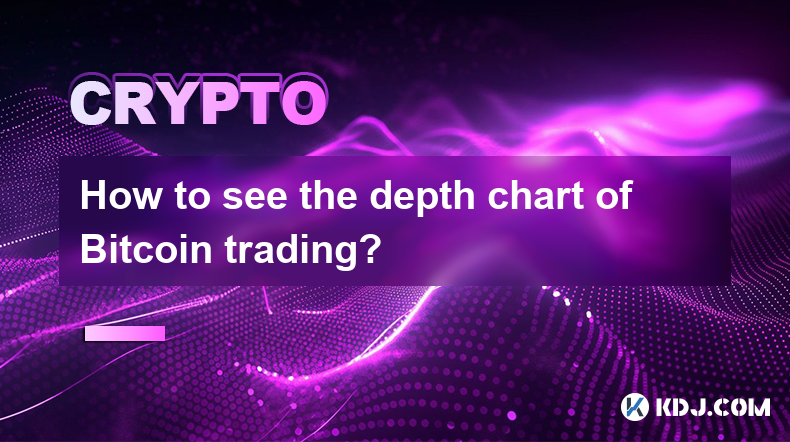
How to see the depth chart of Bitcoin trading?
Apr 17,2025 at 08:36am
Understanding the depth chart of Bitcoin trading is crucial for any serious cryptocurrency trader. The depth chart provides a visual representation of the supply and demand for Bitcoin at various price levels, helping traders make informed decisions about when to buy or sell. In this article, we will guide you through the process of accessing and interp...
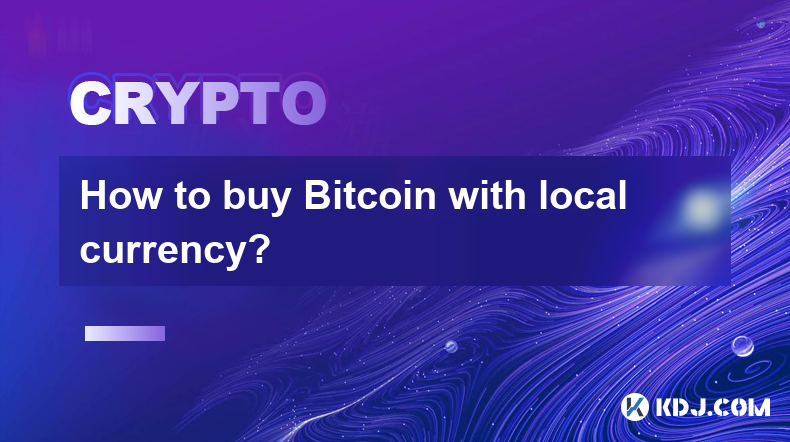
How to buy Bitcoin with local currency?
Apr 18,2025 at 01:22am
Buying Bitcoin with local currency is a straightforward process that allows you to enter the world of cryptocurrencies using your familiar fiat money. Whether you are a beginner or an experienced investor, understanding the steps to acquire Bitcoin with your local currency can help you make informed decisions and manage your investments effectively. In ...

What is the Lightning Network in Bitcoin trading?
Apr 19,2025 at 02:35am
The Lightning Network is a second-layer scaling solution designed to enhance the speed and efficiency of Bitcoin transactions. It operates as an off-chain network that allows users to conduct multiple transactions without the need to settle each one individually on the Bitcoin blockchain. This significantly reduces transaction fees and speeds up the pro...
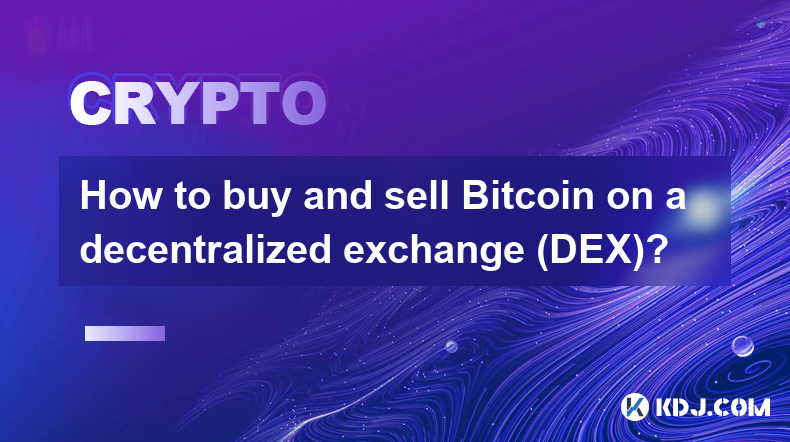
How to buy and sell Bitcoin on a decentralized exchange (DEX)?
Apr 18,2025 at 02:42am
Buying and selling Bitcoin on a decentralized exchange (DEX) offers a different experience compared to traditional centralized exchanges. DEXs provide more privacy and control over your funds, as they allow you to trade directly with other users without an intermediary. This guide will walk you through the process of buying and selling Bitcoin on a DEX,...

How to buy and sell Bitcoin using a P2P platform?
Apr 18,2025 at 05:57pm
Buying and selling Bitcoin using a P2P (peer-to-peer) platform can be an efficient way to trade cryptocurrencies directly with other individuals. This method offers flexibility, often lower fees, and the ability to use various payment methods. In this article, we will walk through the process of buying and selling Bitcoin on a P2P platform, ensuring you...

How to avoid high transaction fees in Bitcoin trading?
Apr 18,2025 at 12:14am
How to Avoid High Transaction Fees in Bitcoin Trading? Bitcoin trading can be exciting, but high transaction fees can quickly erode your profits. Understanding how to minimize these fees is crucial for any trader looking to maximize their returns. In this article, we will explore various strategies and techniques to help you avoid high transaction fees ...

How to see the depth chart of Bitcoin trading?
Apr 17,2025 at 08:36am
Understanding the depth chart of Bitcoin trading is crucial for any serious cryptocurrency trader. The depth chart provides a visual representation of the supply and demand for Bitcoin at various price levels, helping traders make informed decisions about when to buy or sell. In this article, we will guide you through the process of accessing and interp...

How to buy Bitcoin with local currency?
Apr 18,2025 at 01:22am
Buying Bitcoin with local currency is a straightforward process that allows you to enter the world of cryptocurrencies using your familiar fiat money. Whether you are a beginner or an experienced investor, understanding the steps to acquire Bitcoin with your local currency can help you make informed decisions and manage your investments effectively. In ...

What is the Lightning Network in Bitcoin trading?
Apr 19,2025 at 02:35am
The Lightning Network is a second-layer scaling solution designed to enhance the speed and efficiency of Bitcoin transactions. It operates as an off-chain network that allows users to conduct multiple transactions without the need to settle each one individually on the Bitcoin blockchain. This significantly reduces transaction fees and speeds up the pro...

How to buy and sell Bitcoin on a decentralized exchange (DEX)?
Apr 18,2025 at 02:42am
Buying and selling Bitcoin on a decentralized exchange (DEX) offers a different experience compared to traditional centralized exchanges. DEXs provide more privacy and control over your funds, as they allow you to trade directly with other users without an intermediary. This guide will walk you through the process of buying and selling Bitcoin on a DEX,...
See all articles






















































































